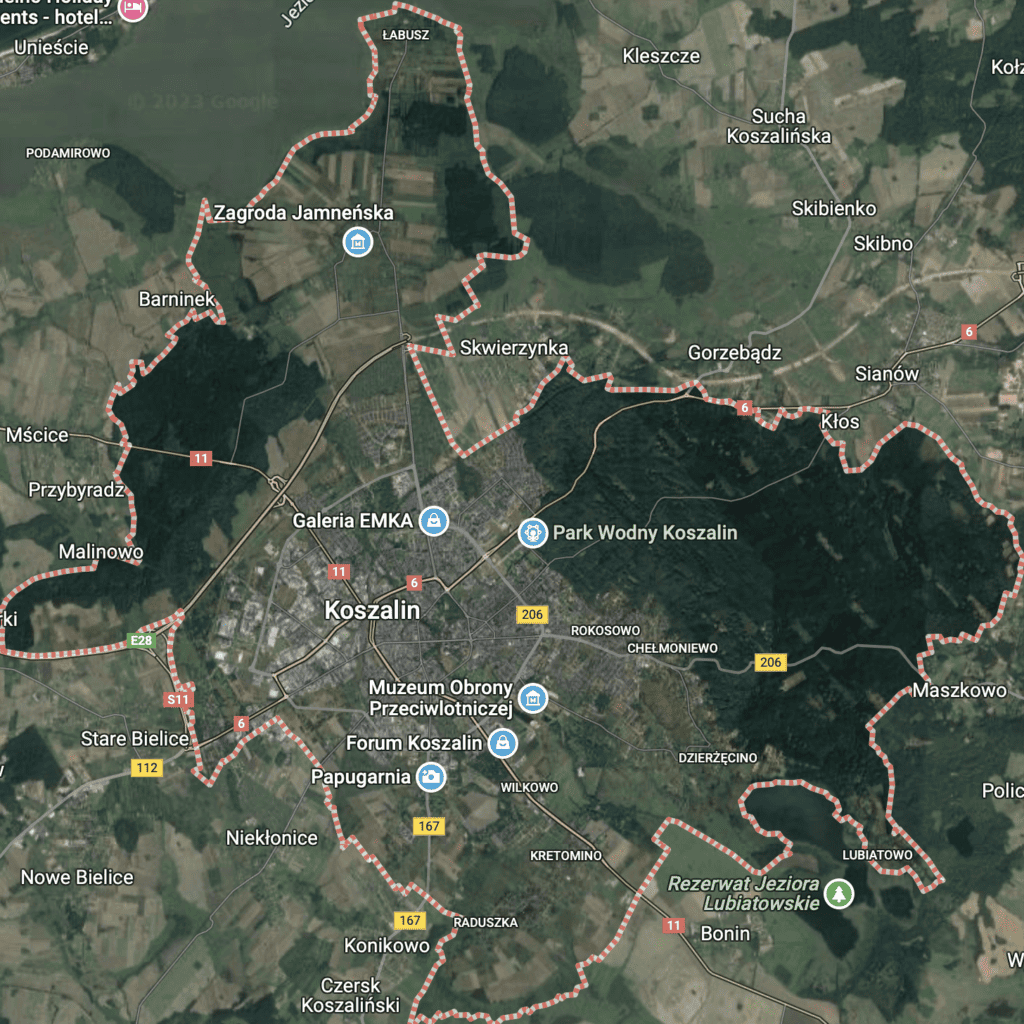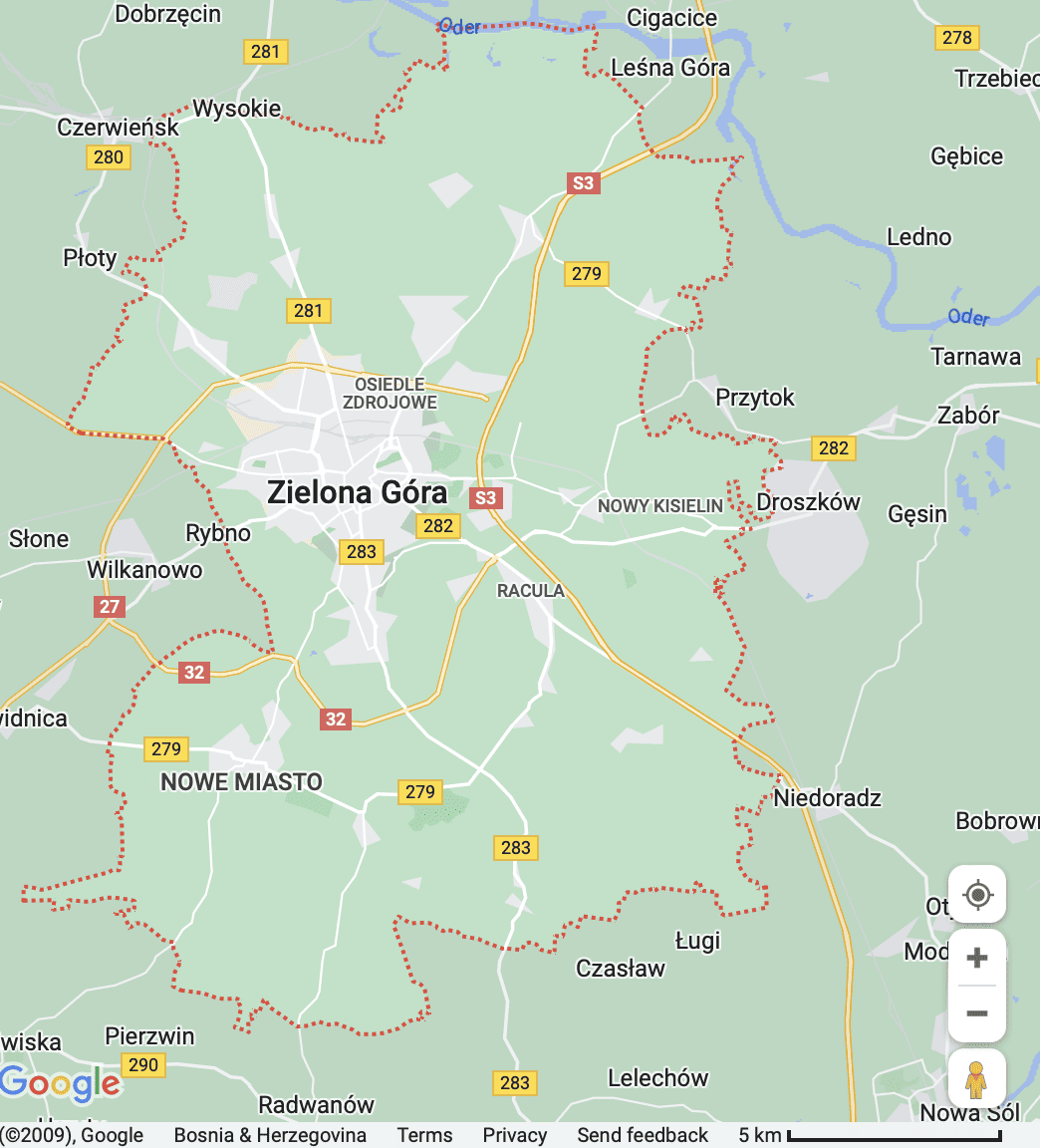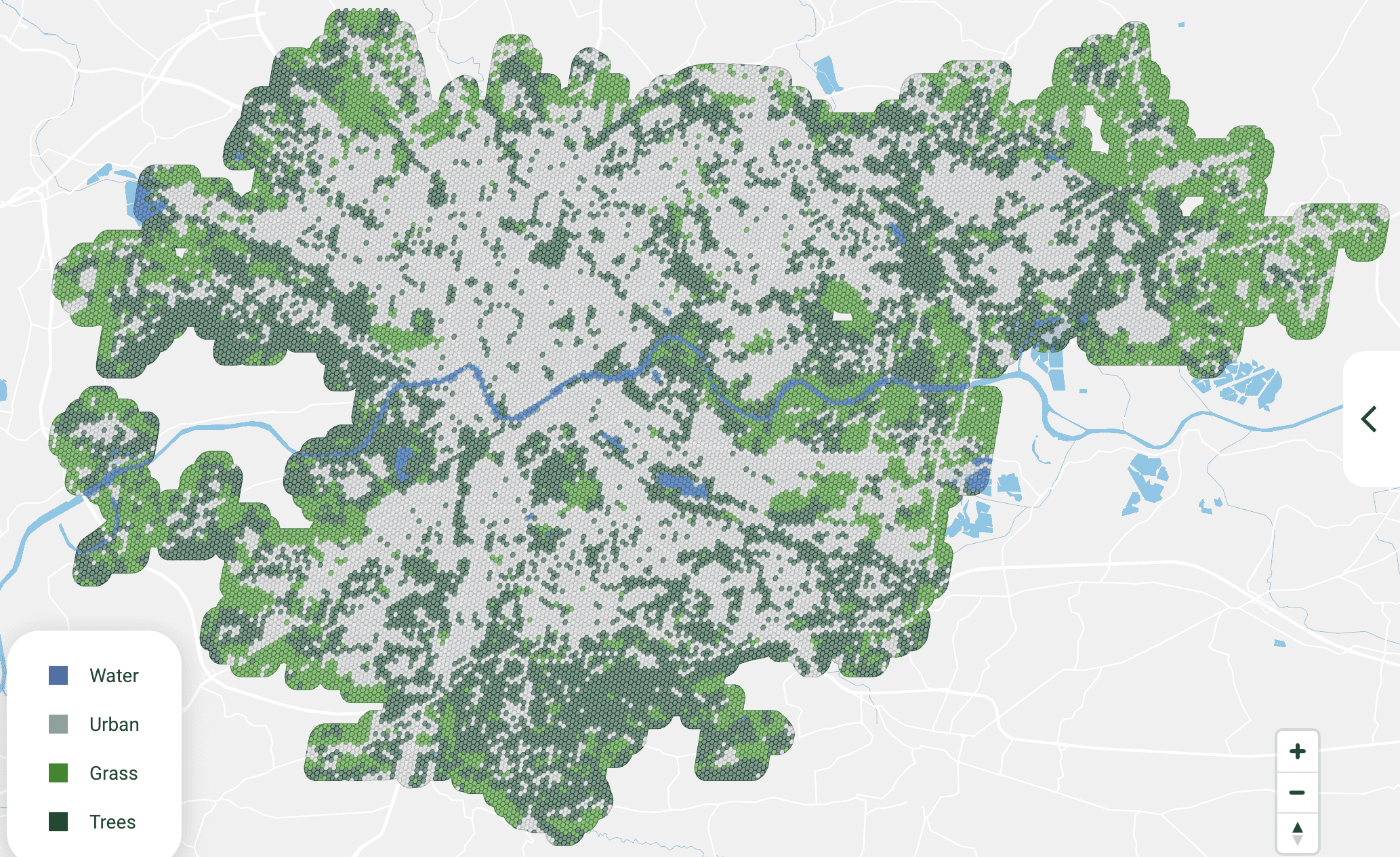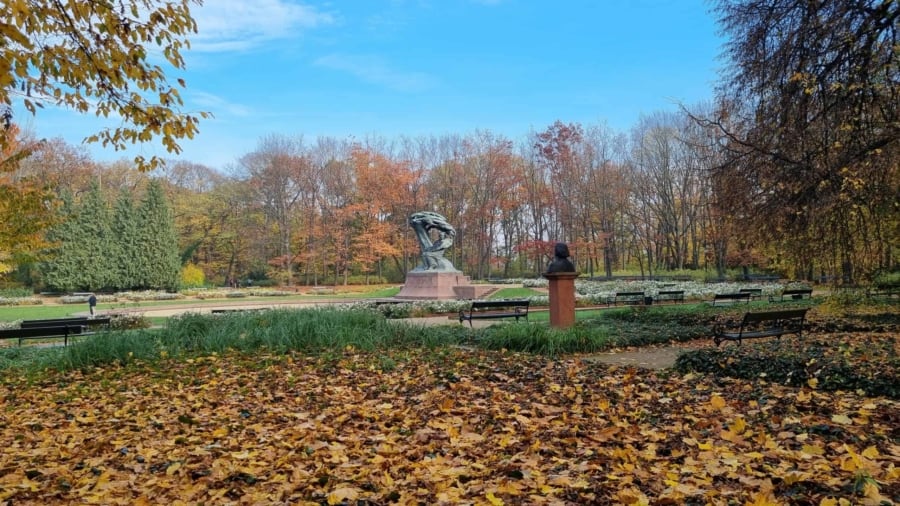In my most recent post which details what it’s like living in Gdańsk, I extolled the virtues of the city for its availability of green spaces. Well, my latest quest is to find out what the greenest cities in Poland are. Much to my surprise, Gdańsk didn’t fare all that well.
Background
In order to identify which Polish cities offer the largest quality green areas, the Urban Policy Observatory of the Institute of Urban and Regional Development (IRMiR) carried out extensive research. It published results of its study back in March 2021.
IRMiR used satellite images to assess the amount of green areas in cities with over 100,000 inhabitants, ranking them according to following criteria:
- the share of green spaces in the total area of the city
- the fragmentation of green areas
- the availability of green areas as a share of residents with access to green areas within a five-minute walk
The Polish cities with the greatest share of green spaces
According to the overall share of green spaces within the total area of the city, the greenest cities in Poland are:
- Koszalin (70%)
- Zielona Góra (67.5%)
- Kielce (66.8%)
Following close behind those cities are Dąbrowa Górnicza (63.4%) and Bielsko-Biała (62.9%).
My gripes about Koszalin being the greenest city in Poland
When it comes to the top two greenest cities (Koszalin and Zielona Góra), I’m going to play devil’s advocate just a little bit. To my eye, we have two small cities with dubiously stretched out city limits and “districts” which resemble villages.
First of all, let’s deal with Koszalin.
The city borders of Koszalin are perhaps not as questionable as those belonging to Zielona Góra. The huge area of forest land in the east of the city is not connected with any settlements that resemble villages nor villages that were once a part of the city of Koszalin.


I have two gripes with Koszalin being the greenest city in Poland. The first is with the northern part of the city. Łabusz was a village until 31 December, 2009. Would Koszalin be among the greenest cities in Poland without its beloved Łabusz and all its greenery?
My second observation is to do with the fact that the inner-city area of Koszalin is relatively bereft of green spaces. There are a few parks. Indeed, Kościuszki Park (Park im. Tadeusza Kościuszki) seems to be good-sized. Still, the fact remains that a fair proportion of the population of Koszalin has to walk a few kilometres to even see a park or green space of note. I don’t believe that this is the case in most other Polish cities.
My issue with Zielona Góra being the second greenest city in Poland
The city boundaries of Zielona Góra seem to go on forever, particularly from north to south. You would have thought it was a major city, like Poznań or Gdańsk.

Ah but wait. Google solves the crime. All these districts on the outskirts of the city of Zielona Góra were separate villages until 2014. Without them, Zielona Góra would be well down the list of the greenest places in Poland.
To be fair to Zielona Góra, it does have quite a few decent-sized parks within city limits. However, I can’t get over the fact it gobbled up all those villages in 2014.
Other findings
Regarding the share of green spaces in the total area of Polish cities, the lowest values were noted in Opole (25.2%), Kalisz (28.1%), Białystok (35.1%) and Lublin (36%).
As for the biggest cities in Poland, Gdańsk and Wrocław recorded only 40.1% and 40.9% respectively. Warsaw and Kraków have above national average shares. I will share a few words about how green some of Poland’s major cities are later.
The Fragmentation of Green Areas
In terms of the compactness of city greenery, in other words where it’s distributed among larger patches, cities with the most consistent structures of greenery are Gdynia, Zielona Góra, Katowice, Elbląg and Dąbrowa Górnicza.
Cities with the highest degree of fragmentation were Opole, Wrocław, Lublin, Łódź and Gorzów Wielkopolski.
On the same lines as my gripe about Zielona Góra, Gdynia has huge forest areas within its city limits, covering around 45% of its total area. Therefore, the authors should perhaps take into account only urbanised areas in any future reports.
City populations with access to large green areas within a five-minute walk
The authors from IRMiR found that, on average, half of the city populations have access to large green spaces within a five-minute walk.
The highest accessibility was recorded in Rzeszów (77.9%), Ruda Śląska (75.7%), Olsztyn (72.6%), Koszalin (70.3%), Kraków (65.7%) and Wałbrzych (65.4%). In contrast, the least accessible green areas are in Opole (3%), Elbląg (14.5%), Kalisz (20.2%), Białystok (23.9%), Chorzów (28.1%) and Tychy (33.9%).
Preconceptions well and truly quashed
Certainly, some of the results have come as a surprise to me. I will now share how two of my preconceptions were resoundingly quashed as a consequence of reading the results of research carried out by IRMiR.
Surprise 1 – Gdańsk is not as green as I thought
I was amazed to learn that the overall share of green spaces in the total of Gdańsk stands at only 40.1%.
First of all, the south-western part of Gdańsk is mostly green with Sulmiński forest dominating the landscape. Secondly, the southern section of the Tri-City Landscape Park falls within Gdańsk’s city borders. As you can see, this is a significant proportion of territory which covers most of the district of Oliwa:

I praised Gdańsk for its green spaces in my most recent post about what it’s like living in the city. Jaśkowa Valley forest-park is an inner-city gem, while there are some excellent parks near the beach. These parks are Jelitkowo Park, Brzeźnieński Park and the enormous Reagan Park.
Still, I got a little carried away and overlooked the fact that there are districts, such as Siedlce, Łostowice, the City Centre (Śródmieście) and Wrzeszcz (at least the eastern side of it), with few very substantial green spaces.
With all the development that’s been going on in the city since the time of the report (2021), not forgetting the sad small-scale urban deforestation seen in inner-city forests such as Jaśkowa Valley forest-park, the figure of 40.1% is now pie in the sky. I imagine that It’s more like 35-39% these days.
Surprise 2 – Kraków is greener than I thought
I lived in Kraków for two short periods in my early years in Poland (2005-2007). Frankly, I was up to my ears in work and study so I didn’t see many green spaces.
I’ve recently discovered the Husqvarna Urban Green Space Index (HUGSI). This is an AI-powered satellite solution that signals how green cities are by analysing their urban areas and how they are developing. Since 2019, HUGSI has carried out annual surveys of a growing number of cities in the world.
As things stand on HUGSI, around 280 cities have been ranked. Krakow is ranked 31st. Very impressive indeed. Wrocław is right down in 131st place.
According to HUGSI, the percentage of urban green space in Kraków stands at 57%. Breaking this down, the percentage of urban area covered by trees is 37%. This is some 12% higher than the global average, taking other cities analysed by HUGSI into account. The other 20% of Kraków’s green space is taken up by grass. This is actually a percentage point lower than the global average.

Having only really explored the Old Town of Kraków and central districts such as Kazimierz and Kleparz, I’ve hardly paid heed to the fact that huge areas of protected forest such as Bielańsko-Tyniecki Landscape Park and Tyniec Forest (Lasy Tynieckie) are incorporated into the city’s boundary.
The Greenest Cities in Poland
Despite my concerns about the “green” status of cities like Zielona Góra and Koszalin, I’m delighted that Kraków and Warsaw are among some of the greenest cities in Poland.
Indeed, according to HUGSI, Warsaw’s global ranking is 47th – not too shabby at all. the percentage of urban green space in Warsaw is 51%. Breaking this down, the percentage of urban area covered by trees is 38%. The other 13% of Warsaw’s green space is covered by grass.
With Royal Łazienki Park and Wilanów Park, which forms an integral part of Wilanów Palace and Gardens, Varsovians should feel privileged to have such stunning green spaces on their doorstep.
I can’t sign off without mentioning Łódź. I lived in Łódź for 18 months back in 2012-13. I have fond memories of my time there. In particular, I remember my weekly jaunt to Łagiewniki forest in the north of the city to have a good walk or jog. In recent years, Łódź has been reaping the rewards from investment schemes in the fields of urban renewal and the revitalisation of the city centre district. Let’s not forget that Łódź is sufficiently green too.
Reference:
https://www.themayor.eu/en/a/view/find-out-the-names-of-the-greenest-polish-cities-7449

